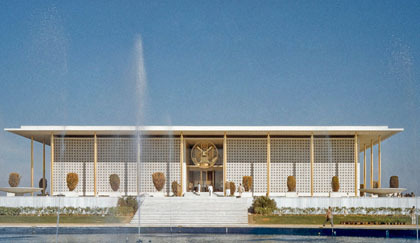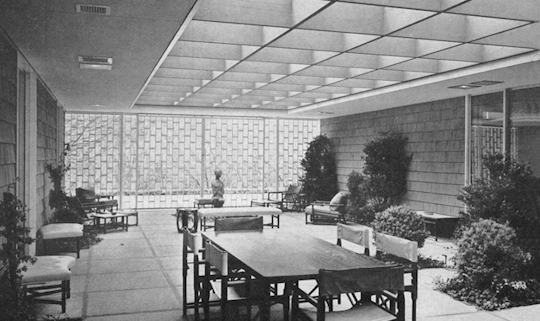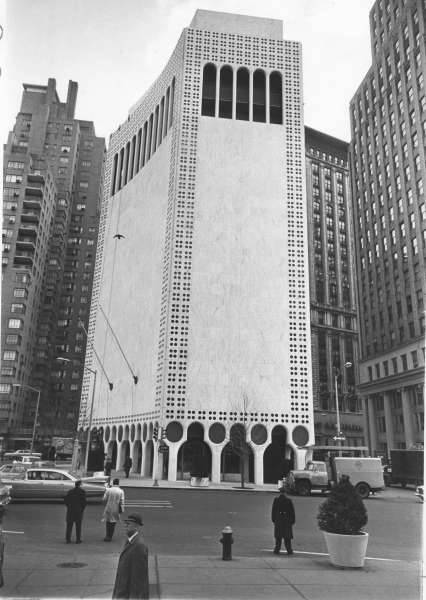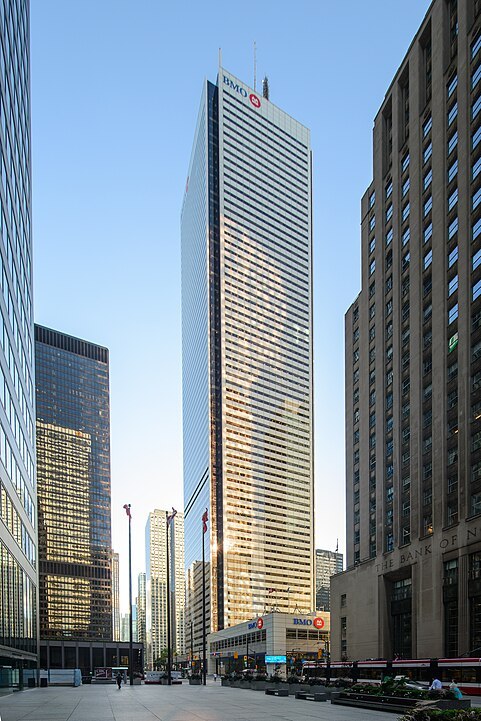#best housing architects in India
Explore tagged Tumblr posts
Text

Floor Plan Design
Bungalow Makers is the top floor plan design company in Indore offering services all over India. We offer Floor plans for houses, apartments, offices, vintage, bungalows, or any other commercial places. Our Floor Design plan services are affordable in cost.
Other Complete House Plan Services We Offer:
Interior Designs
Interior and Exterior Elevation Designs
2D and 3D Elevation Designs
Site Visits
Complete Structural Drawings
#Best architect agency in India#House design Package#Residential Apartment Designs#Best House Designers#Best Online Architect Services#architects & interior designers in India#Bungalow Makers#Ultra Modern House Design#Floor Plan design#Interior Design Company#architectural and interior Design#architecture engineer#duplex house plans#30x50 house plans#3d elevation design#house 3d elevation#Traditional House Design#House Plan#House Design Plans#home interior design#house plan design#duplex house design#house elevation design#house plans#1200 sq ft house plans#home interior designs#kitchen interior designs#bedroom interior designs#Kerala House Designs#elevation design
5 notes
·
View notes
Text

Triplex 2-BHK House Plan by Dream House Makerz
Searching for the best architect in India? Dream House Makerz brings you a well-designed Triplex 2-BHK house plan for a 25 x 60 east-facing plot. We provide online services like elevation, interior design, and floor plans to help you build the home you’ve always wanted.
0 notes
Text
https://uconnect.ae/read-blog/52367_6-amazing-duplex-house-interior-design-ideas.html
#best interior designers in odisha#best interior designer in bhubaneswar#best interior designer in india#interior design company in bhubaneswar#Best home interior designer in bhubaneswar#Luxury Interior Design service bhubaneswar#best interior design Service in bhubaneswar#office interior designers in bhubaneswar#top interior designers bhubaneswar#commercial interior design in india#best architect in bhubaneswar#3 bhk interior design cost in bhubaneswar#house interior design
0 notes
Text
https://www.designforuminternational.com/
Three young architects from IIT Kharagpur in 1995 christened an architecture practice which specialized and excelled in developing individual family homes. Initially called Tevatia Chauhan & Sharma Architects, the practice rechristened as Design Forum International (DFI) in 2003 with a clear...
#best architects in india#top architecture firms in india#affordable housing in gurgaon#top indian architects
0 notes
Text
Best Architect in Noida
Ashirwadum Architects & developers are Best Architect in Noida and they provide services ranging from Urban planning, landscape designing, Housing design, Commercial design, residential design, institutional design and interior design.

#best architects in india#best interior design in noida#architect in noida#best interior in lucknow#interior design#housing design
0 notes
Text
Why Hire Professional Interior Designer?
Using a professional interior designer's skills is essential if you want to create the home of your dreams. A talented interior designer can take your space to new heights whether you're remodelling your current home or building a luxury home from the ground up. With an emphasis on the best interior designers in India and Delhi, we'll examine the persuasive arguments for hiring a professional interior designer in this article.
#best interior designers in india#architects in delhi#interior designers in delhi#interior designers for home#luxury house
0 notes
Text
Role of an architect in the construction project
An architect is a person hired by a client to construct any project. An architect's major role is to plan, design, and organize a project's construction as per the client's ideas and requirements. He plays a crucial role in the construction project and is responsible for creating the overall vision for a building or structure and for ensuring that this vision is translated into a functional and safe design.
Since India is a developing country, there is a huge scope of rapid construction activity of roads, residential buildings, commercial buildings, sea bridges, etc. The government has planned to achieve the goal of a $5 trillion economy by the end of 2025. According to the Economic Survey, India has to invest around $1.4 trillion in infrastructure development to achieve the goal of a $5 trillion economy. In November 2022, the World Bank estimated that India will need to invest $840 billion over the next 15 years, or an average of $55 Billion per annum, into urban infrastructure. It is estimated that by 2036, around 600 million people in India will adopt the urban lifestyle, which will be almost 40% of the total population. Therefore, this particular statistic clearly indicates that this will create many opportunities for architects. Hence there will be a huge demand for an architect in the construction project.
Role of an Architect
The first step in a construction project is the conceptual design stage. Here, a meeting is initially conducted between a client and an architect, and as per the client's requirements, the goals, budget, and site design are finalized. The architect will then create a conceptual design that meets these requirements, considering factors such as zoning regulations, building codes, and the surrounding environment. Once the design is approved, the architect moves on to the schematic design stage, where they create detailed plans and elevations of the building. During this stage, the architect will work closely with engineers and other consultants to ensure that the design is structurally sound and meets all necessary building codes and regulations.
The next stage is the design development stage, where the architect creates more detailed drawings and specifications for building construction. This includes floor plans, electrical and plumbing layouts, and details of the building's exterior and interior finishes. The architect will also coordinate with other consultants and contractors to ensure that the design is feasible and meets the client's needs. The contractors will take care of the necessary things by arranging the quality materials like steel, bricks, timber, rock, stone, sand, tiles, the best cement in India, and other building materials. If the construction project is not big enough, then some of these building materials are available in the shop of any cement dealers nearby.
After the design development stage, the architect will move on to the construction document stage, where they create detailed construction drawings and specifications that will be used by the contractor to build the building. This includes structural drawings, electrical and plumbing schematics, and detailed instructions for the construction of the building's various systems and components. The architect will also review and approve all submittals, such as shop drawings, product data, samples, and mock-ups submitted by the contractor, to ensure they comply with the construction documents.
During the construction phase, the architect takes important updates by monitoring the contractor's progress and ensuring that the building is constructed per the plans and specifications. The architect will visit the site regularly to monitor the progress and review the contractor's work for compliance with the plans, and provide guidance and direction as needed. They will also coordinate with other consultants and contractors to ensure that the work is proceeding smoothly and that any issues that arise are addressed on time.
Architects are also responsible for the aesthetic design of the building, which is one of the most important aspects of a construction project. A building that is visually pleasing and harmonizes with its surroundings can significantly increase the value of the property and the surrounding area. Additionally, a good architect will consider the environmental impact of the building and strive to use sustainable materials and methods to reduce the building's carbon footprint.
Finally, the architect will conduct a final inspection of the building to ensure that it has been constructed per the plans and specifications and that all necessary permits and approvals have been obtained. Once the building has been completed and all necessary approvals have been obtained, the architect will close the project.
In conclusion, the role of an architect in a construction project is vital. They are responsible for creating the overall vision for a building or structure and for ensuring that this vision is.
#best cement#best cement for house construction#best cement in india#cement dealers nearby#cement dealers near me#role of architects in construction project#role of contractors#building materials#right building material supplier#world bank#ambuja cement#acc cement#ultratech cement#bangur cement#wonder cement#shree cement
0 notes
Text
Once the pride of the Maratha Empire, Pune exists as an intriguing blend of the past and the present. The city acted as a throne for the Peshwas of the Maratha kingdom and continues to be of economic, cultural and political importance. Dotted with ancient temples, palaces, forts, and wadas, Pune is no less than a heritage beauty and here are 5 such places you must visit when in Pune.
#ht lifestyle#hindustan times#architects in pune#best architects in india#indian architecture#rajasthani architecture#palaces in india#interior designers in pune#royal house design#home design#bungalow interior design#luxurious interior design#bungalow design#luxurious house#rajasthani palace#mahal design#haveli design#palatial house#best place to visit in india#place to visit in pune#pune best place
1 note
·
View note
Photo

House One891 - A minimalist two-storey residence in #Panchkula, India by Studio Vasaka @studiovasaka. Read more: Link in bio! Photography: Vaibhav Passi @vaibhav_passi. House One891, designed by Studio Vasaka, showcases a seamless integration of sleek, modernist aesthetic with organic elements. Its rectilinear form, distinguished by clean lines and minimalist detailing, establishes a serene dialogue with the verdant landscape that envelops the site. The house is located in the southern residential neighborhood of Panchkula, on a typical rectangular plot of 420 sqm for a family of four that consists of a couple and two sons… #casa #india #архитектура www.amazingarchitecture.com ✔ A collection of the best contemporary architecture to inspire you. #design #architecture #amazingarchitecture #architect #arquitectura #luxury #realestate #life #cute #architettura #interiordesign #photooftheday #love #travel #construction #furniture #instagood #fashion #beautiful #archilovers #home #house #amazing #picoftheday #architecturephotography #معماری (at Panchkula, India) https://www.instagram.com/p/CqW7apRsWSS/?igshid=NGJjMDIxMWI=
#panchkula#casa#india#архитектура#design#architecture#amazingarchitecture#architect#arquitectura#luxury#realestate#life#cute#architettura#interiordesign#photooftheday#love#travel#construction#furniture#instagood#fashion#beautiful#archilovers#home#house#amazing#picoftheday#architecturephotography#معماری
47 notes
·
View notes
Text
Bungalow Makers is a premier architectural and interior design firm based in Indore, renowned for crafting exquisite living spaces that blend functionality with aesthetic appeal. Specializing in bespoke residential projects, Bungalow Makers brings a unique fusion of modern design principles and traditional elements to each project, ensuring a harmonious balance that reflects the client's personal style and needs. Their team of skilled architects and creative interior designers work collaboratively, offering end-to-end solutions from concept to completion. Whether it's designing luxurious villas, contemporary apartments, or stylish interiors, Bungalow Makers is committed to excellence and innovation. Their meticulous attention to detail and commitment to quality have made them a trusted name in Indore's design community, transforming spaces into elegant and comfortable homes. For those seeking to elevate their living experience, Bungalow Makers provides unparalleled expertise and a passion for creating beautiful, functional environments.
#architects & interior designers in indore#Best architect agency in India#Best Online Architect Services#best house designers#architectural and interior design company#Modern House Designs#Interior Designs Company#Duplex House Design#House Floor Plans#architects & interior designers in india#house plan#home plan#house map#naksha#house naksha#naksha maker#floor plan creator#floor plan designer#house design#floor planner#3d home design#3d house design
0 notes
Text
How Can Interior Design Elevate Your Daily Life?
Interior design for home can transform your daily life by making spaces more functional, comfortable, and visually pleasing. Dream House Makerz, an online architecture firm, offers services like online elevation, interior design, and floor plans to help you create a home that enhances your lifestyle. With their expertise, you can enjoy a well-designed living space tailored to your needs and preferences.
0 notes
Text
Why Escon is a Well-Known Name in Real Estate
Escon is a name synonymous with luxury and quality in the real estate industry. Over the years, Escon has earned a stellar reputation, especially for its remarkable 4 BHK Villas in Escon panache Greater Noida which is one of the leading examples of Escon’s success story.
Let’s take a closer look at the journey that has made Escon a trusted name in real estate.
The Journey Begins
Escon started with a vision to provide homes that are more than just living spaces. From day one, our focus has been on quality, innovation, and customer satisfaction. This commitment has guided us through every project, setting new benchmarks in the industry.
Choosing the Best Locations
One of the key reasons for Escon’s success is our strategic selection of locations. Greater Noida, with its blend of urban convenience and serene environment, is the perfect setting for our luxury villas. We ensure that our properties are well-connected to major hubs while providing a peaceful retreat from the hustle and bustle of city life.
Architectural Excellence
At Escon, we believe that a well-designed home can significantly enhance the quality of life. Our 4 BHK villas are crafted by top architects who combine modern aesthetics with functionality. Every detail, from spacious layouts to elegant interiors, is meticulously planned to offer a luxurious living experience.
Superior Quality Materials
We take pride in using only the best materials for our villas. From the foundation to the finishing touches, every element is chosen for its durability and aesthetic appeal. This attention to quality ensures that your Escon villa remains a cherished home for years to come.

Luxurious Amenities
Life at Escon Villas is all about indulgence. We provide a range of high-end amenities, including state-of-the-art swimming pools, fully equipped gyms, lush gardens, and recreational areas. Whether you’re looking to relax or stay active, our amenities cater to all your needs.
Unmatched Security
Your safety is our priority. Our villas are equipped with advanced security systems, including 24/7 surveillance and a dedicated security team. You can enjoy peace of mind knowing that you and your family are well-protected.
Sustainability and Eco-Friendliness
We are committed to building sustainable communities. Our villas incorporate eco-friendly practices, such as energy-efficient designs and ample green spaces. Living in an Escon villa means living in harmony with nature.
Building a Community
At Escon, we don’t just build houses; we build communities. Our projects foster a sense of belonging and camaraderie among residents. When you choose an Escon villa, you’re joining a community of like-minded individuals who value quality, luxury, and sustainability.
Join the Escon Family
Escon’s journey has been marked by a relentless pursuit of excellence and a passion for creating exceptional living spaces. Our 4 BHK villas in Greater Noida are a testament to this commitment. Escon Panache is one of the brilliant projects we have delivered so far. If you’re looking for a home that offers unparalleled luxury, superior quality, and a vibrant community, look no further than Escon.
Discover the elegance and comfort of Escon villas today. We are here to help you to find out the best for your investment in real estate. Your dream home awaits!
Great news guys Explore our website and contact us to know more about one of the luxurious projects Escon Panache Villas.
Visit:-https://esconpanache.com/ Ref:-https://esconpanachevilla.blogspot.com/2024/06/why-escon-is-well-known-name-in-real.html
Location: Greater Noida, Uttar Pradesh, India
#4bhkluxuryvillas#4 bhk villa in greater noida#4bhk villa#4bhk villa in noida#escon panache villas#smart luxury villa#esconpanache
4 notes
·
View notes
Text
An evident lack of footfall in major shopping malls/entertainment hubs has required a reformative approach to shift from the existing architectural designs and adopt a different approach for all future designs to ensure a consistent footfall in these spaces.
#best architects in india#best indian architects#affordable housing in gurgaon#architecture firms in chennai
0 notes
Photo

Where All The Houses Look The Same. (a Scout Story) The man shows me around his living room with pride, and I smile and take pictures and try my best to act as though I’m seeing it for the first time, when in fact I’ve already been in this living room three times this afternoon. I am scouting a neighborhood where all the houses look the same. It’s a modern tract home development on the outskirts of Los Angeles, built five years ago, or maybe ten, or maybe it’s impossible to say with certainty anymore because it feels like the architects have finally figured out a model that defies dating and have been churning them out ever since. In truth, the homes are not exactly identical. There are four or five models that repeat at intervals, each with its own small variations. All are a shade of beige, but some are sand-colored, some mocha. Every so often, a house design is inverted, as though it’s a mirror image of the one across the street. But as this man leads me from the dining room to the kitchen, it’s a though his home is one of a kind, the center of his universe. He tells me how overjoyed he was to be able to afford it after moving to this country from India. He shows me each of his children’s bedrooms, clearly proud they don’t have to share. In his own room, he points out his view of the scrub-covered hills in distance as though it were a vista of the Rockies. And as I take pictures, my frustration grows, because we are going to portray this man as a fool. Because you’ve seen this neighborhood, the neighborhood where all the houses look the same, in countless movies and TV shows. And in virtually every instance, it is always used to inspire one particular reaction: ridicule. In the movies, there is no more shameful place to live than the neighborhood where all the homes look the same. It is uniformly portrayed as an undeniable symbol of a character’s vapidity, their soullessness, their superficiality, their simple-mindedness. “How could anyone live in a place where all the houses look the same?” we are meant to ask as we recoil in horror at the idea. It is nothing less than a suburban purgatory, a place where the days bleed into weeks, the weeks into months and years, and all is the same and nothing ever changes and so your first hour there is indistinguishable from your last. Almost universally, if the fictional homeowner completes their inner character arc by the end of the movie as expected, their final triumph is moving out of such a neighborhood in favor of one that has been deemed acceptable: a classically unique home, situated amongst other classically unique homes. If their personal growth goes awry, the punishment is to remain. Of all the tired locations I get asked to search for, I hate this one the most. I hate it because despite having scouted countless such properties over the years, I have never once met a single homeowner who resembles the soulless, vapid, superficial, simple-minded cliché who will be portrayed as living in their home. A privilege of being a scout is that as you are photographing a person’s home, they will often volunteer intimate details of their lives with you, such as how they came to live there. And consistently, the reasons people offer for having chosen this sort of neighborhood could not be more universally understandable. The desire for as large a house as can be afforded, with lots of space to raise a family. Access to good schools for their children. Low crime rates. Centrally located. Reliable infrastructure. All are extremely aware of the copycat nature of their homes. It’s not a secret. They know. It’s not like in the movies, where the homeowner is inexplicably ignorant of the most obvious trait of their neighborhood, only to jolt awake to the monotony of design as the movie progresses. Homeowners will often make light jokes about it up front, typically followed up with a “but what are you gonna do?” shrug. It easy to tell that they consider uniformity to be a minor trade-off for attaining highly regarded benefits that would otherwise not be available to them. This is the fundamental issue that filmmakers seem terminally oblivious to. It’s not the 1950s anymore, when affordable homes were abundant, and living in tract housing was to some degree an aesthetic choice. It is 2023, where homeownership is outside the reach of most average people, certainly in cities like Los Angeles. The idea of portraying a resident of such a home as some sort of tasteless automaton is the grossest condescension I can imagine. At the very least, I can say with authority that such a depiction has no basis in reality. As my scout concludes, I thank the man for showing me his beautiful home, and then move on to the next one. Indeed, it is near identical. The only differences I can identify are an additional dormer window and a slightly different paint job. But the woman I meet inside could not be more different. She’s younger, and recently married, and as she begins to share the story of why they chose this home due to her husband’s career in the army, any hope of simplistic categorization instantly vanishes. As it always does. As it always will. -- Scout Stories is a print-only publication of personal stories and photography from my 18 years as a location scout, published quarterly. Purchase Scout Stories #1 here: www.nickcarr.com NEW Scout Stories #2 issue coming March 1.
37 notes
·
View notes
Text
The New Formalist: Edward Durell Stone
This is the second part of a two-part post. Read part one.
Stone’s Academic Career
During the late 1940s into the early 1950s Stone was an “associate professor of architecture at the Yale University School of Architecture��� (2). His reputation allowed him to connect with other prominent architects in academia such as Walter Gropius at Harvard University’s Graduate School of Design, and Pietro Belluschi, dean of MIT’s School of Architecture and Planning. He also guest lectured on architecture at Cornell, Princeton, and Stanford. (2)
A New Woman Brings a New Influence to Edward Durell Stone’s Life
Edward Durell Stone and his first wife, Sarah, divorced in 1952. After his divorce, while on a transatlantic flight, Stone found himself seated next to “Maria Elena Torchio, a fashion writer… and proposed to her before the plane landed” (1). The couple were married in 1954 and “would have two children, Benjamin Hicks Stone III and Maria Francesca Stone” (2).
Stone’s Pivotal Commission in India
In 1954 Stone’s firm was commissioned by the United States government to design a new embassy in New Delhi, India. Stone strived to create a “modern structure that would respect the architectural traditions of its host country” (2). The embassy would define a major shift in Stone’s style which would become known as “New Formalism.” The most prominent feature of the clean, elegant building is its decorative concrete grille. Stone’s hero Frank Lloyd Wright who rarely praised the work of other architects, publicly lauded it (2,4).

Edward Durell Stone, United States Embassy (1954), New Delhi, India. Image source.
Architecture critic Paul Goldberger called it “one of the best‐known pieces of American architecture of the decade” (1). The success of the United States Embassy in New Dehli established Stone’s place as a major American Twentieth Century architect. It also led to important commissions such as the “John F. Kennedy Center for the Performing Arts in Washington, … the General Motors Building in New York, and the State University of New York campus at Albany” (1). “Business Week called him ‘the man with a billion on the drawing board’ ”(3).
“These designs fused the formalism of Stone's early Beaux-Arts training with a romantic historicism, … influenced, in part, by Maria Stone's Italian origins” (2). The couple took several trips to Italy during this time which “reawakened his interest in the classical and Italianate” (2) architecture. While Stone did not intend that his work copy classical architecture he hoped that his work would embody its timelessness. (2)

Edward Durell Stone, Koff Apartments (1965), Deerfield Beach, FL. Image source.
Stone becomes a Celebrity Architect
Edward Durell Stone’s work garnered him publicity both at home and internationally. In 1958 Time did a cover story on the architect. He appeared on many television programs, including Edward R. Murrow’s “See It Now.” Stone published his autobiography, The Evolution of an Architect in 1962. (5)

Edward Durell Stone, Carlo M. Paterno House, aka The Atrium House (1962), demolished around 2010. Image source.
Huntington Hartford Gallery of Modern Art
Stone’s later work “became more romantic and more highly embellished” (1), such as the Huntington Hartford Gallery of Modern Art built on Columbus Circle in New York City in 1964.
Paul Goldberger described the building as “an eccentric marble box on delicate legs with arches at top and bottom and characteristic Stone grill work tracery up and down the sides.” The structure's delicate legs caused many New Yorkers to refer to it as “The Lollipop Building.” In the mid-2000s the structure would become embroiled in a controversy over preservation.
“New York City's Landmarks Preservation Commission refused to consider its eligibility for landmark status” (2). Little of Stone’s original design remains after its renovation designed by architect Brad Cloepfil. (7)

Edward Durell Stone, Huntington Hartford Gallery of Modern Art - Two Columbus Circle (1964). Image source.
Edward Durell Stone’s Later Work
Stone’s firm continued to “garner major architectural commissions”, and his later work includes, “the Standard Oil building in Chicago, Illinois (completed 1973); the First Bank Tower in Toronto, Ontario (completed 1975); and the Florida State Capitol in Tallahassee (completed 1978)” (2). His last residential work was the Sheldon Cohen House (1976) in Greenwich, CT. (3) Although successful, these later works earned more scorn than praise from the critics.

Edward Durell Stone, First Bank Tower (1975), Toronto, Canada. Photo credit: Arild Vagen. Image source.
In 1966 Stone and his muse, Maria Elena Torch, divorced. He remarried in 1972, this time to his executive assistant, Violet Campbell La Stella. The couple had a daughter, Fiona Campbell Stone…. Declining health forced Stone to retire from active practice in 1974.” (2) His firm Edward Durell Stone & Associates, however, remained in business until 1993.
Stone’s Tributes and Legacy
During his career Stone had several honorary degrees bestowed on him including one from the University of Arkansas in 1951. (4). Stone received numerous awards for his work including the Medal of Honor from the New York Chapter of the American Institute of Architects in 1955. He became a Fellow of the American Institute of Architects in 1958 (2). He won the Horatio Alger Award in 1971. (4) The Mullins Library at the University of Arkansas holds “an extensive collection of project and personal photographs in addition to a collection of architectural drawings and papers” (2).
Edward Durrell Stone died after a brief illness in New York City on August 6, 1978. (1) His career spanned five decades and encompassed Art Deco, the influence of Frank Lloyd Wright, Modernism, and his own unique decorative style of architecture, reacting against the cold International Style. As Paul Goldberger wrote, “Mr. Stone sought not to go beyond the International Style but to turn the clock back to a personal kind of modern architecture.”
References
Goldberger, P., (7 August, 1978). Edward Durell Stone Dead at 76; Designed Major Works Worldwide. https://www.nytimes.com/1978/08/07/archives/edward-durell-stone-dead-at-76-designed-major-works-worldwide-a.html
R. L. Skolmen and H. Stone, (n.d.). Edward Durell Stone: Life. https://www.edwarddurellstone.org/
Smart, G., (2024). Edward Durell Stone, FAIA (1902-1978). https://usmodernist.org/stone.htm
Wikipedia.com, (7 February, 2014). Edward Durell Stone. https://en.wikipedia.org/wiki/Edward_Durell_Stone
Edward Durell Stone, The Evolution of an Architect, (New York: Horizon Press, 1962), 92.
Britannica.com, (n.d). Edward Durell Stone, American architect. https://www.britannica.com/biography/Edward-Durell-Stone#ref81069
Goldberger, P. (18 August, 2008). Hello, Columbus. https://www.newyorker.com/magazine/2008/08/25/hello-columbus
2 notes
·
View notes
Text
“The Zone of Interest: The Banal Dreams of Nazi Settler Colonialism”
In Jonathan Glazer's Oscar-Winning Movie, You Do Not See Auschwitz the Camp; You See Auschwitz the Colony. Neither Exists Without the Other
— Hazem Fahmy | 11 March 2024 | Middle East Eye

English Director Jonathan Glazer Poses with the Oscar for Best International Feature Film for "The Zone of Interest" during the 96th Annual Academy Awards on 10 March, 2024 (AFP)
In the 1965 Soviet Film Ordinary Fascism, Also Known as Triumph Over Violence, director Mikhail Romm’s voiceover implores the viewer to pay attention to the petit-bourgeois quality of fascism in general, and Nazism in particular.
Over archival footage of German small-business owners leaving their stores in uniform and hopping onto bicycles, he remarks, almost comically: "Here is a butcher, and there goes a baker." This brief scene succinctly captures Hannah Arendt’s (by now highly cliched) notion of the "banality of evil", a phrase she coined while covering the trial of Adolf Eichmann, known as the "architect of the Holocaust".
But Arendt’s own refusal to interrogate the inherently colonial nature of European fascism, a refusal inseparable from her own racism and western chauvinism, has blunted the sharpness of that term’s capacity for critical insight. Yes, the Holocaust was engineered by middle managers, but to what end? What did they get out of the horrific affair, besides satiating their sadism?
A simple answer is Jonathan Glazer’s Academy Award-winning film,The Zone of Interest: land - more specifically, enough land to replicate the expansionism of American manifest destiny, to recreate the German Aryan into the fascist ideal of the Ubermensch.
Over the weekend, the film won the Oscar's best international film award. In his acceptance speech, Glazer told the audience: "Right now we stand here as men who refute their Jewishness and the Holocaust being hijacked by an occupation which has led to conflict for so many innocent people, whether the victims of October 7 in Israel or the ongoing attack in Gaza."
The story follows the mundane domestic lives of Rudolf Hoss (Christian Friedel), the longest-serving commandant of the Auschwitz concentration camp, and his wife and children, as they go about their days in their idyllic house adjoining the camp grounds.
As the primary subject is the Holocaust, the film has been widely noted for its refusal to visually depict any of the atrocities that occurred within the camp, though the audience frequently hears gunshots and screams from over the wall. This bold narrative and political choice has been consistently misread in mainstream film criticism as a simple affirmation of Arendt’s limited perspective on the "banality of evil".
It is far too simplistic to describe the film as a truncated biopic of its subject, nor is it accurate to reduce it to a formal experiment; a film about the Holocaust in which you do not see the Holocaust. In other words, The Zone of Interest is not simply a film about the Nazi official as a middle manager, but is much more importantly a film about the Nazi official as a settler.
Cartoon Villains
Since 1939, mainstream western education, media, and discourse about World War II and the Holocaust have strived to depict Nazism as a catatonic movement of unbridled hate, rather than a settler-colonial one in continuum with those of other western powers.
Nazis tend to be portrayed as larger-than-life cartoon villains, rather than quite ordinary monsters, easily comparable to their colonial brethren in the Belgian Congo, French Algeria or British India, among countless other places around the world that have had the misfortune of experiencing western occupation and colonialism.
youtube
Writers and scholars from across the Third World have, of course, long questioned this narrative. One of the most notable and succinct critiques was levied by Aime Cesaire in his Discourse on Colonialism.
But such perspectives have been uncommon within the US. With the exception of Isabel Wilkerson’s Caste, which has frequently been criticised for oversimplifying the primary terms of its investigation, writing on the intimate connections between western, and very specifically American, colonialism and Nazism is often marginalised. Scholars such as Carroll P Kakel and Edward B Westermann are few and far between.
The beauty of these scenes begs the (rhetorical) question: what is the difference between Hoss's family and that of any other frontiersman?
This connection is laid bare in The Zone of Interest, both visually and politically.
The amount of screen time dedicated to the lush vistas of the Nazi-occupied Polish countryside, in which Hoss and his family hike, swim and play, evokes the frontier romanticism of classic western films such as The Naked Spur, Shane and Johnny Guitar.
Being Hollywood productions, these stories, of course, implore the viewer to identify with the settlers’ yearning for the vast landscapes they seek to conquer and rid of their indigenous inhabitants.
In The Zone of Interest, the gaze is identical, but it is now one of a Nazi as opposed to that of a noble American pioneer. The beauty of these scenes begs the (rhetorical) question: what is the difference between Hoss’s family and that of any other frontiersman?
Pivotal Scene
Glazer’s identification of Poland as a frontier for Nazi German expansion is one shared unambiguously by his characters. In a pivotal scene, Hoss and his wife Hedwig (Sandra Huller) argue as to whether they should leave Auschwitz. He has been reassigned elsewhere by his higher-ups and his instinct, as that of any family man, is to take his wife and children with him.
But Hedwig refuses: “Your work is in Oranienburg now. Mine is raising our children.” When he insists, she delivers the final blow: “This is our home. We’re living how we dreamed we would since we were 17 - beyond how we dreamed. Out of the city finally. Everything we want, on our doorstep. And our children strong and healthy and happy. Everything the Fuhrer said about how we should live is exactly how we do. Drive east, Lebensraum. Here it is.”
Hedwig’s impassioned plea emphasises what the vast majority of western media narratives seek to suppress: that genocidal fascist projects are always about reproduction as much as they are about destruction. This is why Lebensraum, German for "living space", is so seldomly discussed in mainstream depictions of the Holocaust.
The Nazis’ ideology of eastward settler expansion did not simply echo American manifest destiny, but considered it a blueprint. This is why the robotically repeated line that the film is about not depicting, or “looking away” from Auschwitz is patently false. You do not see Auschwitz the camp. You see Auschwitz the colony. Neither exists without the other.
Ironically, and despite being the only filmmaker at the 96th Academy Awards to explicitly acknowledge the situation, Glazer himself apparently failed to see the resonance of his own work to the ongoing Israeli genocide in Gaza. In multiple interviews, he has responded meekly when asked about Israel’s mass slaughter and starvation of Palestinians since 7 October, with a shallow lamentation for “both sides”. He repeated this liberal sentiment during his acceptance speech for Best Foreign Language Film, ignoring how the Hoss family has been reborn time and time again in Sderot and Ashkelon and all the other settlements of the so-called Gaza envelope.
Anyone uncomfortable with such comparisons needs only to listen to the words of Israeli leaders speaking of Auschwitz as their end goal for Gaza. I wish Glazer had done so, rather than fall into the tired old trap his own work so brilliantly escapes.
When it comes to colonialism, what most urgently demands our attention is not the banality of evil, but the evil of banality.
#Youtube#Middle East Eye 👁️#The Zone of Interest#The Banal Dreams#Nazi Settler Colonialism#Jonathan Glazer#Winner of Oscar for Best International Feature Film#English Director#96th Annual Academy Awards#Hazem Fahmy
4 notes
·
View notes